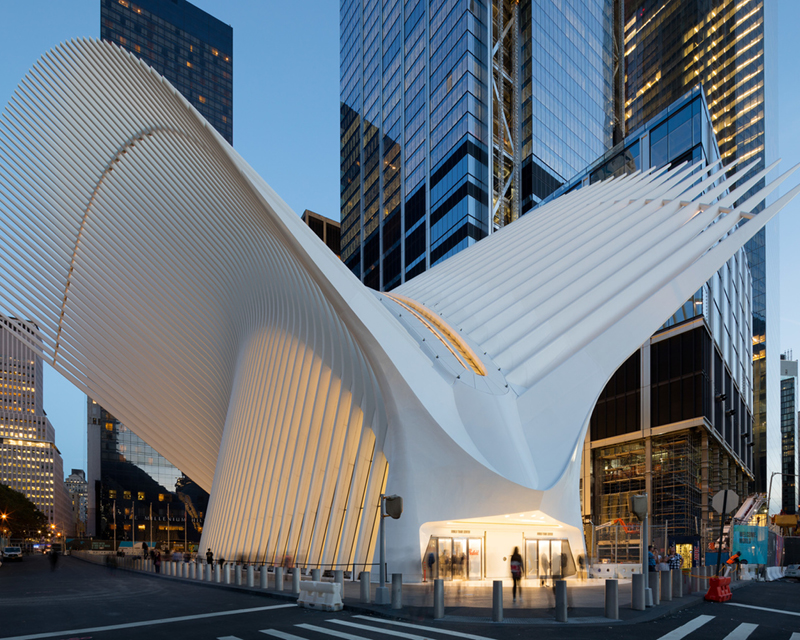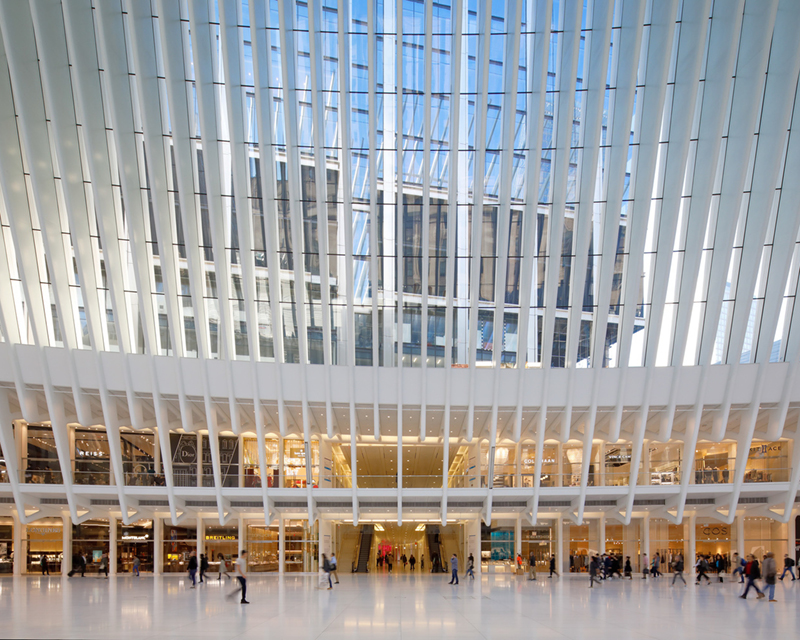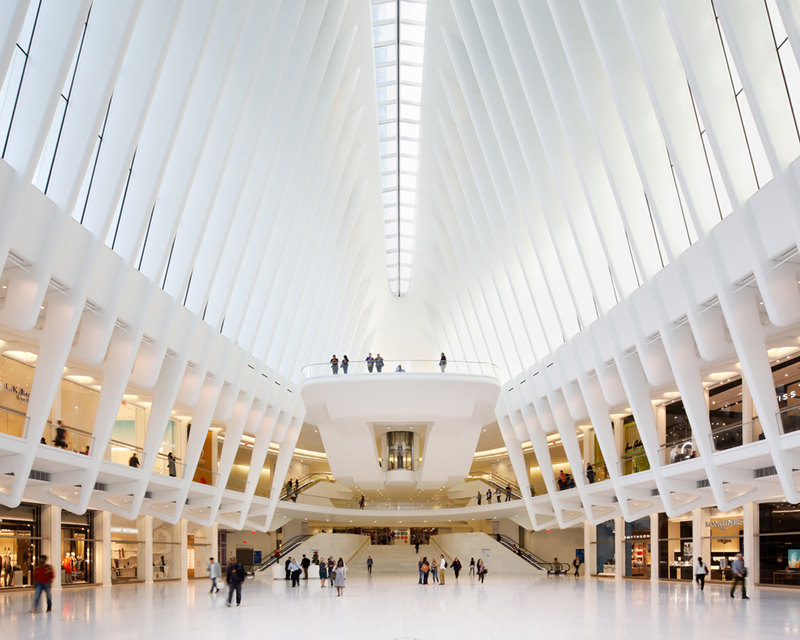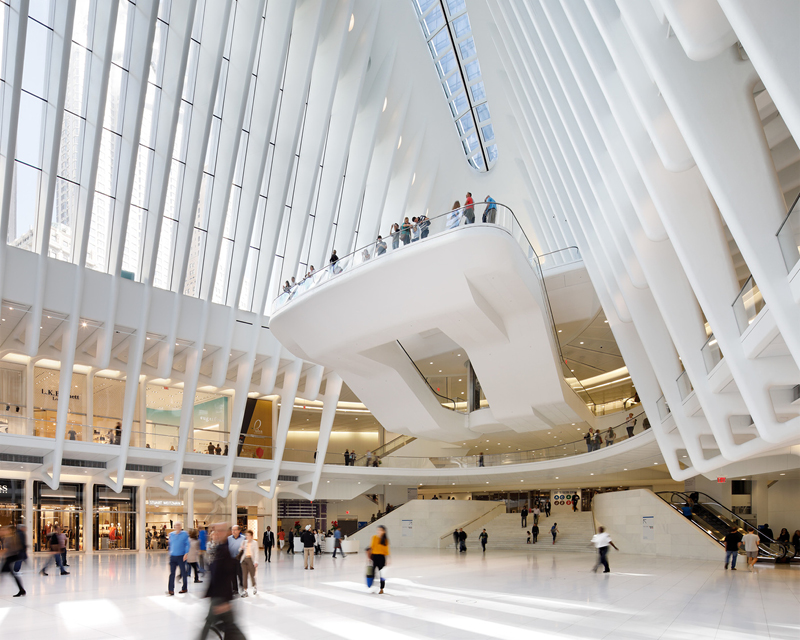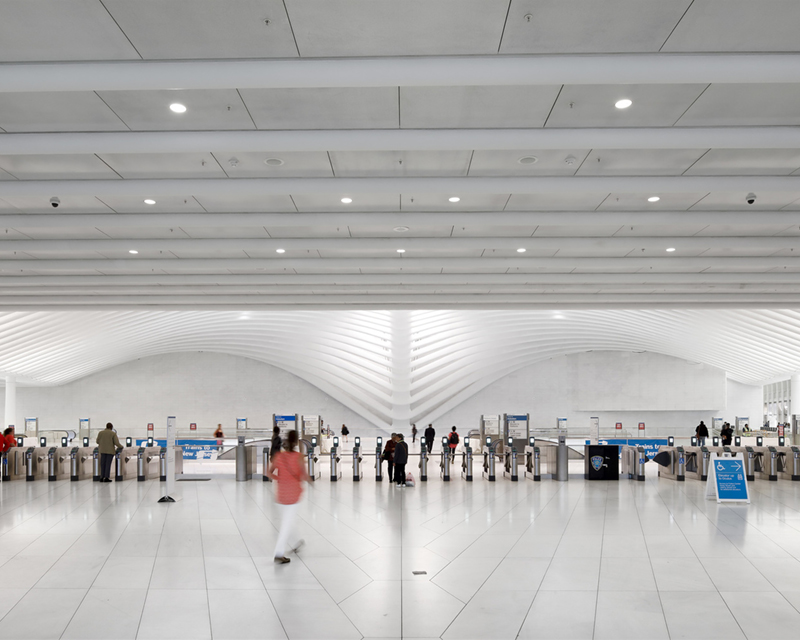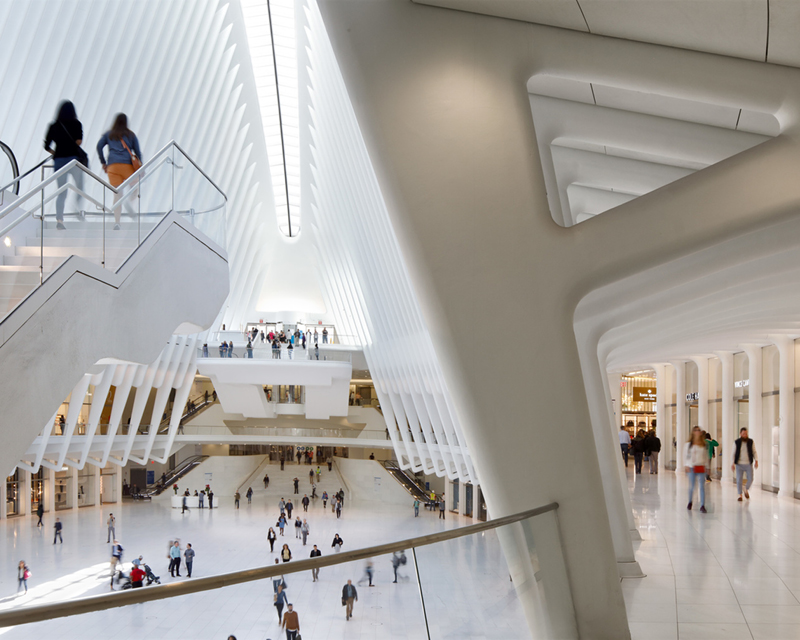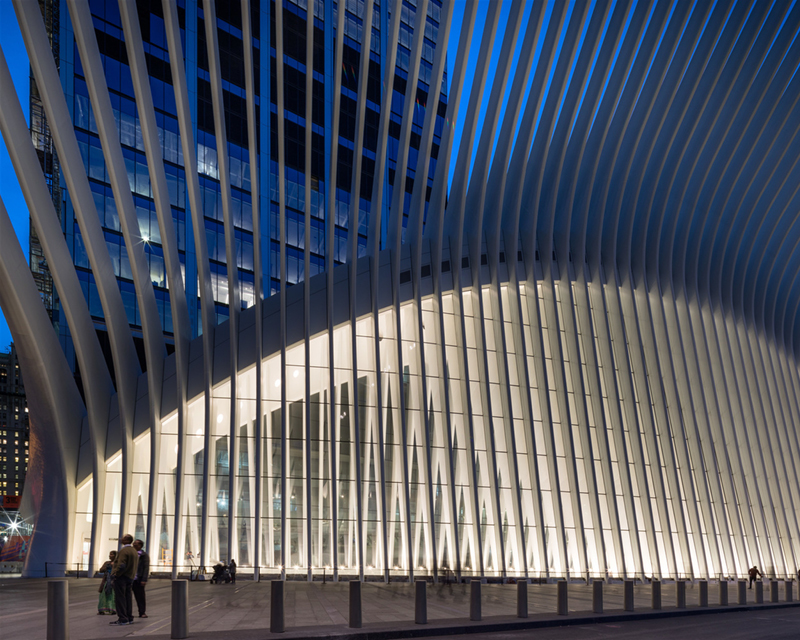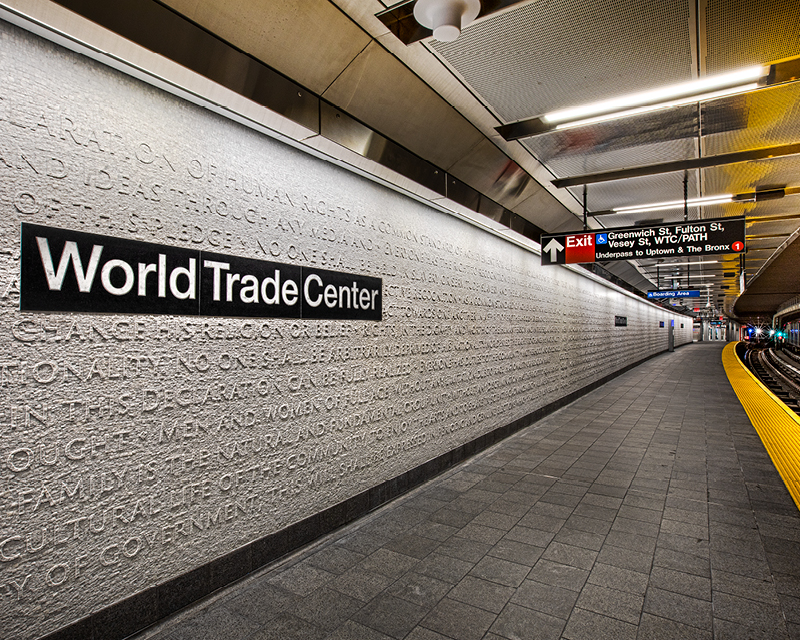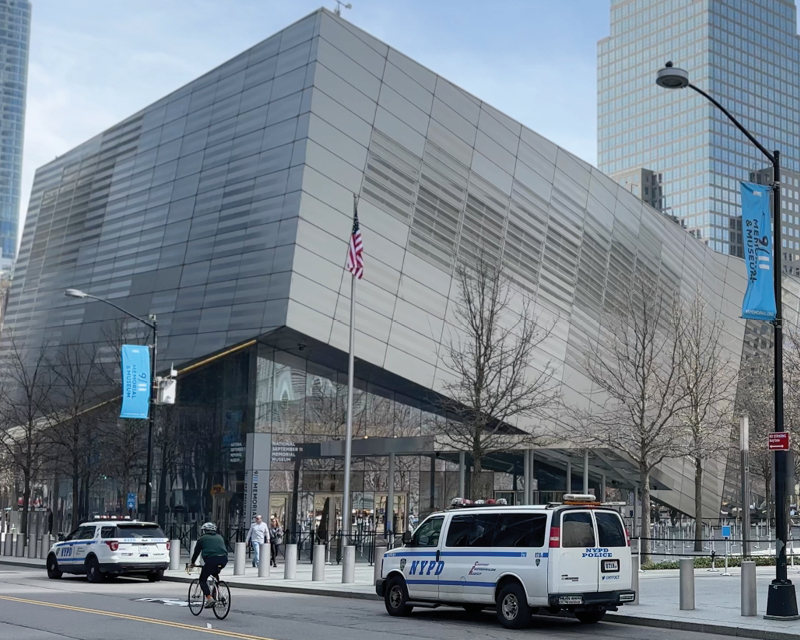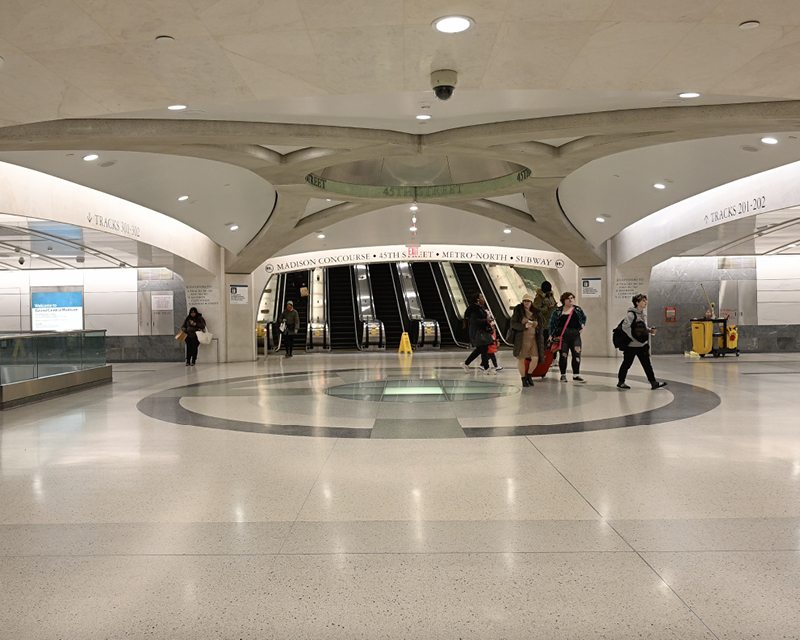The World Trade Center Transportation Hub marks the confluence of the Port Authority of New York and New Jersey’s (PANYNJ) longstanding commitment to rebuilding the World Trade Center (WTC) site. It is a key component of the 16-acre redevelopment of Lower Manhattan in the aftermath of September 11, providing seamless public access throughout the site for more than 250,000 daily commuters, users and visitors via its Port Authority Trans-Hudson (PATH) station and integration with the Metropolitan Transportation Authority New York City Transit subway system. The facility also provides internal pathways to the site’s office towers and features nearly 400,000 square feet of retail space.
The Downtown Design Partnership, an STV/AECOM joint venture, served as the managing architect/engineer and architect/engineer-of-record, in association with Parsons Transportation Group. Santiago Calatrava was the design architect and structural engineer.
Calatrava’s design of the facility’s iconic rib-like structure evokes a dove taking flight, representing healing and hope. The soaring, wing-shaped shell consists of hundreds of tons of steel and glass. The Oculus, the Hub’s main transit hall, is comparable in size to Grand Central Terminal’s main concourse.
The team worked with dozens of stakeholders, an evolving group that included the PANYNJ, federal, state and city agencies, developers and political leaders to make this project possible. The completed hub honors the commitment, drive and dedication of the PANYNJ, the workers and all the stakeholders in remembering September 11 and pride in rebuilding the WTC site.
The milestone effort was recognized at the regional, national and international levels, including the highest honors from the American Council of Engineering Companies (ACEC) in New York and New Jersey, a Grand Award from ACEC’s national chapter, and a “Global Best Project” from Engineering News-Record.
250,000
daily commuters served
400,000
square-feet of retail space
